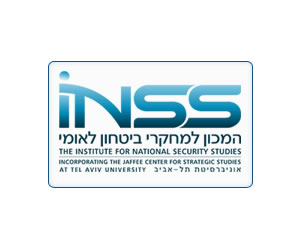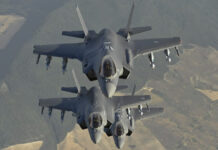A recent article in Newsweek reported that “according to a well-placed intelligence source,” in 2007 Saudi Arabia began to purchase CSS-5 (DF-21) ground-to-ground missiles from China. While similar reports appeared in the past, the recently published information is distinguished by its confirmation by an official – albeit anonymous – source, and by the revelation that the Americans knew about the Saudi-Chinese deal and were involved in it. The report raises many questions about the Saudis’ motivations, the implications of the deal, and the timing of the exposure. INSS analysts Yiftah Shapir , Yoel Guzansky wrote in a recent INSS analysis.
A recent article in Newsweek reported that “according to a well-placed intelligence source,” in 2007 Saudi Arabia began to purchase CSS-5 (DF-21) ground-to-ground missiles from China. While similar reports appeared in the past, the recently published information is distinguished by its confirmation by an official – albeit anonymous – source, and by the revelation that the Americans knew about the Saudi-Chinese deal and were involved in it. The report raises many questions about the Saudis’ motivations, the implications of the deal, and the timing of the exposure.
Denied purchase of ground-to-ground missiles by the United States in the 1980s, the Saudis, unbeknownst to the United States, purchased about ten launchers and several dozen Chinese DF-3A missiles (called CSS-2 by NATO), which apparently were customized to carry conventional warheads. The missiles were stationed in a number of sites in Saudi Arabia and maintained by Chinese technicians. The covert deal led to a crisis in relations between Riyadh and Washington, particularly because the missiles were originally intended to carry nuclear warheads. The crisis ended when Saudi Arabia agreed to join the NPT.
The DF-3A missiles were already outdated when the Saudis purchased them, and it was only a matter of time until they would seek to replace them or add more modern missiles to their arsenal. Moreover, these missiles use liquid fuel, are cumbersome to prepare for launching, and have low accuracy. And indeed, for several years there have been reports on Saudi expansion of its missile arsenal. In 2009, the existence of additional sites suspected of belonging to the Saudi missile arsenal was reported. A book by a former CIA employee published in 2010 even claimed that in 2003, the Saudis, with the knowledge of the United States, purchased advanced ground-to-ground missiles capable of carrying nuclear warheads. Also in 2010, there were reports that the strategic missile arsenal was being upgraded and that a new headquarters was dedicated outside of Riyadh for the kingdom’s Strategic Missile Force. Already then, doubts surfaced as to whether the Saudis needed the facility if they still had the old missiles.
The latest report confirms the previous ones: the Saudis did in fact purchase missiles from China, with the knowledge of the United States. According to the report, CIA personnel examined the missiles in Saudi Arabia in order to confirm that they did not carry nuclear warheads. It may be that the deal was not revealed until now because the Americans examined the missiles and were not concerned by what they found or because of a desire to avoid embarrassment on both sides. The Americans may also have understood that if they were not involved in the process, Saudi Arabia could do without them, as it did in the past, and they preferred to retain control of the process.
The Dong Feng 21 missile (East Wind 21) is a two-stage ballistic missile that uses solid fuel, which shortens the launch preparation time and makes maintenance easier. It has a range of some 1,700 kilometers and can carry a load of about 600 kilograms. It is much more accurate than the old DF-3A, and its CEP (Circular Error Probable, a measure of accuracy) is estimated at about 300-400 meters. Its later models are also equipped with terminal guidance, which enables it to hit pinpoint targets (though it is unlikely that these later models were exported).
It is possible that the Saudis have purchased other missiles in addition to the DF-21, including other models produced in China (such as the DF-11 or the DF-15) or Pakistani-made missiles, such as one of the Shaheen series. Moreover, the Saudi efforts to acquire long range weapons have extended to cruise missiles, and the British reportedly sold the kingdom Storm Shadow cruise missiles as part of the Saudi program to upgrade its Tornado jets. The missile has a range of some 500 kilometers (and therefore, its export is restricted under the Missile Technology Control Regime agreements). An unofficial confirmation of the sale of the missile appeared in WikiLeaks documents in 2009, and in 2013 it was reported that in contrast to previous refusals, the United States had agreed to sell the Saudis SLAM-ER cruise missiles.
While the new missiles have a shorter range than their predecessors, they have better accuracy. This gives them a greater deterrent value in Saudi eyes, even if they have conventional warheads, because of their ability to hit government buildings, strategic facilities, and military bases in Iran. Does the presence of these missiles significantly change the military balance in the region? Not as long as the missiles are armed with conventional warheads.
The recent Newsweek report raises new questions as to the kingdom’s intentions in the nuclear realm. Officials in Saudi Arabia, which is in the midst of a significant conventional military buildup, have often stated that the kingdom is focusing on a nuclear program to meet the country’s energy needs and reduce its dependence on oil. However, Saudi Arabia has previously examined the military nuclear path, and to this end, has increased its cooperation with a number of countries, in particular Pakistan. It has had military cooperation with Pakistan for some years, and funded part of its nuclear program. In addition, several unusual comments from Riyadh since 2011 have indicated Saudi Arabia’s willingness to examine the nuclear path if the international community is unable to prevent Iran from attaining military nuclear capability. Because Saudi Arabia lacks an independent knowledge infrastructure, if it makes a decision to pursue a nuclear option, it will presumably prefer to purchase an off-the-shelf nuclear deterrent.
The Saudis’ motivation in purchasing the missiles is Iran’s progress in its missile program and the growth and improvement in its ground-to-ground missile arsenal. It is possible that the progress in the Iranian nuclear program will lead to increased Saudi pressure on Pakistan to provide the kingdom with some type of nuclear guarantees, whether through extended deterrence, the stationing of nuclear forces in Saudi Arabia, or transfer of nuclear warheads to the Saudis for installation on the new missiles (in a regulated move or by turning a blind eye).
Not only have Saudi Arabia’s concerns not been mitigated by the interim agreement signed with the Islamic Republic; they have actually intensified, if only because of the agreement’s significance for Iran’s international and regional status. The Saudis are anxious about the Iranian buildup, and it may be that the “revelations” on its missile arsenal are part of an attempt by Saudi Arabia to make its fears public. Furthermore, the report on the American involvement comes in advance of an expected visit by President Obama to the kingdom, which inter alia is designed to assuage Saudi fears that current American policy endangers Saudi security interests.
In recent years, the discussion on strategic issues inside and outside the kingdom has become more public, and therefore, it is likely that further “revelations” can be expected. This is due to the negotiations with Iran and the significance Riyadh attributes to deterrent signals of this kind. The deal itself is also significant, indicating China’s growing interest in selling advanced weaponry to the region (and to Saudi Arabia, China’s largest oil supplier), but perhaps also the weakness of America’s standing in the region.
To date there is no solid evidence that Saudi Arabia intends to pursue the nuclear route, even though nuclear weapons in Iranian hands would be a grave threat to the kingdom. However, in light of its great wealth and relative military weakness, Saudi Arabia will likely seek to construct security arrangements that will lend it more independence in decision making and better chances of maintaining a stable balance of deterrence in the Gulf over time. This is because of the tension in relations with the United States and the fear that it will reduce its involvement in the region after improving its relations with Iran, which would once again turn Iran into the dominant power in the Gulf.
 It is not clear whether Israel has received any guarantees from the United States (perhaps even from Saudi Arabia) about the deals in question. Israel, as a rule, does not favor equipping an Arab state with advanced weapons that are capable of threatening it too. In the past, Israel actively opposed any such buildup. However, in recent years, given the joint Iranian threat, Israel has preferred to turn a blind eye to Saudi Arabia’s military buildup (and that of the other Gulf states), which has even been perceived in Jerusalem as an advantage. Nevertheless, Saudi Arabia’s arming itself with modern ballistic missiles should worry Israel. In addition to the fact that these weapons are in the hands of a state hostile to Israel, the buildup, particularly the silence surrounding it, and the nature of US involvement, bode ill for the stability of the region and the struggle against missile proliferation.
It is not clear whether Israel has received any guarantees from the United States (perhaps even from Saudi Arabia) about the deals in question. Israel, as a rule, does not favor equipping an Arab state with advanced weapons that are capable of threatening it too. In the past, Israel actively opposed any such buildup. However, in recent years, given the joint Iranian threat, Israel has preferred to turn a blind eye to Saudi Arabia’s military buildup (and that of the other Gulf states), which has even been perceived in Jerusalem as an advantage. Nevertheless, Saudi Arabia’s arming itself with modern ballistic missiles should worry Israel. In addition to the fact that these weapons are in the hands of a state hostile to Israel, the buildup, particularly the silence surrounding it, and the nature of US involvement, bode ill for the stability of the region and the struggle against missile proliferation.



















